Flamingos are among the most iconic birds, known for their striking pink or red plumage, long necks, and social behavior. However, when we think of flamingos, the image that often comes to mind is one of vibrant color. What may surprise many is that there are instances of white flamingos, which can be both a natural variation or the result of environmental conditions. While flamingos are generally pink due to the carotenoid pigments they consume in their diet, white flamingos highlight the fascinating intersection between biology, environment, and survival strategies in the wild.
In this article, we will explore the environmental and biological factors that contribute to the existence of white flamingos, their role in the ecosystem, and the conservation issues surrounding these magnificent birds. We will also discuss whether these flamingos represent a unique species or a variation within known species, delving deep into their behaviors, habitats, and conservation challenges.
1. Understanding Flamingo Coloration: Why Are Flamingos Pink?
To understand the phenomenon of white flamingos, it’s important to first grasp the source of flamingo coloration. Flamingos are not naturally pink; they are born with grey or white feathers. Over time, their diet, which is rich in carotenoid pigments found in algae, shrimp, and other aquatic organisms, leads to their vibrant pink or reddish hues. The flamingo’s liver processes the carotenoids into pigments that are deposited in the feathers, skin, and even their beaks.
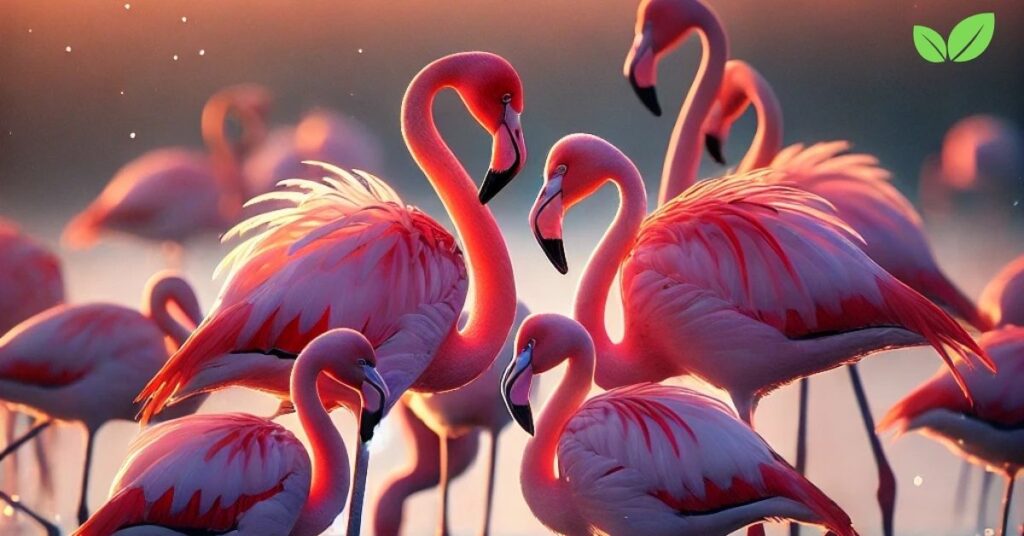
1.1. Carotenoid-Rich Diet
Flamingos primarily feed on algae and invertebrates, which are high in beta-carotene and other carotenoid pigments. These pigments are broken down into usable compounds in the body, influencing their feather coloration. The pinker or redder the flamingo, the healthier and more well-nourished it is, as its plumage reflects its access to a rich food source.
- Algae: One of the primary sources of carotenoids in a flamingo’s diet, algae grows in the shallow, saline lakes where flamingos often reside.
- Brine Shrimp: These small crustaceans, another staple in the flamingo’s diet, also contain carotenoids, further contributing to the bird’s vibrant color.
1.2. Lack of Pigmentation in White Flamingos
In contrast, white flamingos do not exhibit the characteristic pink coloration because of a lack of carotenoids in their diet or other biological factors. In some cases, white flamingos may result from genetic conditions, health issues, or environmental factors that limit their ability to process carotenoids. This can be a temporary or permanent condition, depending on the availability of food and the overall health of the bird.
1.3. Albino Flamingos
While white flamingos are often the result of environmental factors, true albino flamingos also exist, though they are extremely rare. Albino flamingos lack melanin, the pigment responsible for coloring skin, feathers, and eyes. These birds typically have white feathers and pinkish eyes, a hallmark of albinism in many animal species.
2. The Role of White Flamingos in the Ecosystem
Flamingos, whether pink or white, play critical roles in their ecosystems. As filter feeders, they help regulate the populations of algae and small invertebrates in their habitats. Their unique feeding behavior, which involves filtering food through specialized beaks, makes them essential contributors to the health of wetland and saline lake ecosystems. Understanding the environmental significance of white flamingos requires looking at their behaviors, feeding habits, and interactions with their surroundings.
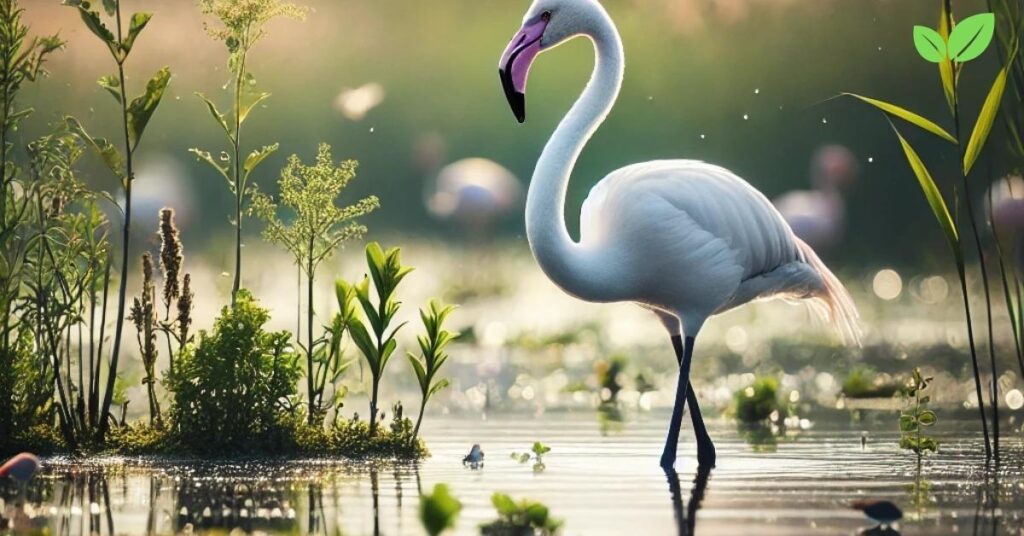
2.1. Feeding Behavior of White Flamingos
Like their pink counterparts, white flamingos are filter feeders. They use their specialized beaks to scoop up water, mud, and food particles, filtering out algae, small crustaceans, and plankton. By feeding on these organisms, flamingos help control the growth of algae, which can otherwise cause harmful algal blooms. This feeding activity promotes a balanced ecosystem and ensures the health of the waters they inhabit.
2.2. Social Structure and Role in Flocks
Flamingos are highly social birds, living in large colonies that can number in the thousands. Social structure plays an important role in their survival, offering protection from predators and helping them find food. White flamingos, if present in a colony, behave similarly to their pink counterparts, engaging in the same communal behaviors such as synchronized feeding, mating dances, and flock defense.
- White Flamingo Visibility: In some cases, the presence of white flamingos may even help them stand out during mating displays, although pink coloration is generally more attractive to potential mates due to its association with health and vitality.
2.3. Environmental Indicators
Flamingos, including white flamingos, are often considered environmental indicators, meaning their health and presence provide insights into the condition of their habitats. When flamingos show signs of malnutrition (such as turning white due to a lack of carotenoids), it often reflects underlying issues in the ecosystem, such as pollution, habitat degradation, or reduced food availability.
3. Flamingo Habitats and the Impact of Environmental Change
Flamingos typically inhabit salt flats, saline lakes, and coastal lagoons. These habitats are delicate ecosystems that can be highly sensitive to environmental changes. The presence of white flamingos may sometimes be linked to fluctuations in these environments, particularly when access to their carotenoid-rich food sources is limited. Environmental changes, such as pollution, climate change, and habitat destruction, can lead to reduced food availability, contributing to the appearance of white flamingos in a population.
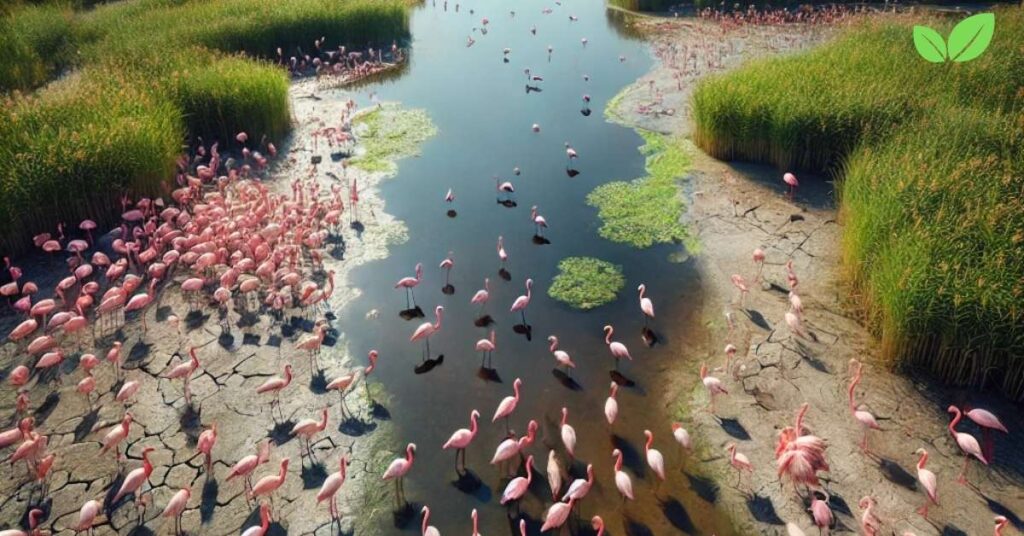
3.1. Habitat Loss and Degradation
One of the biggest threats to flamingo populations is habitat loss. As wetlands and saline lakes are drained or polluted for agriculture, industry, or urban development, flamingos lose their breeding and feeding grounds. This not only affects their populations but can also lead to changes in their coloration, as their food sources become scarcer.
- Water Pollution: Polluted water bodies can disrupt the delicate balance of ecosystems, reducing the availability of algae and other carotenoid-rich organisms that flamingos rely on for their diet. Prolonged exposure to polluted environments can result in health issues and changes in feather coloration, leading to the presence of white flamingos in affected areas.
- Climate Change: Climate change is altering weather patterns, impacting the availability of water in the flamingos’ habitats. Droughts, rising temperatures, and changing precipitation patterns can lead to the shrinkage of wetlands and lakes, further limiting flamingo food sources.
3.2. Conservation of Flamingo Habitats
To ensure the survival of flamingos and prevent environmental conditions from leading to the widespread appearance of white flamingos, conservation efforts are critical. Wetland preservation, pollution control, and habitat restoration are key strategies that can help protect flamingo populations. In many regions, conservationists work with local governments to protect these habitats through the establishment of nature reserves and protected areas.
- Ramsar Sites: Many flamingo habitats are designated Ramsar sites, which are wetlands of international importance. These sites help safeguard critical ecosystems and the species that depend on them.
- Community Involvement: Local communities living near flamingo habitats often play a vital role in conservation efforts. Educating communities about the importance of wetlands and involving them in sustainable management practices can help reduce habitat destruction and pollution.
4. Genetic and Health Factors Affecting White Flamingos
While environmental factors are the most common causes of white flamingos, there are also genetic and health-related reasons behind their lack of pigmentation. Flamingos are highly sensitive to changes in their diet, health, and environment, which can all influence their ability to process carotenoids and maintain their characteristic pink coloration.
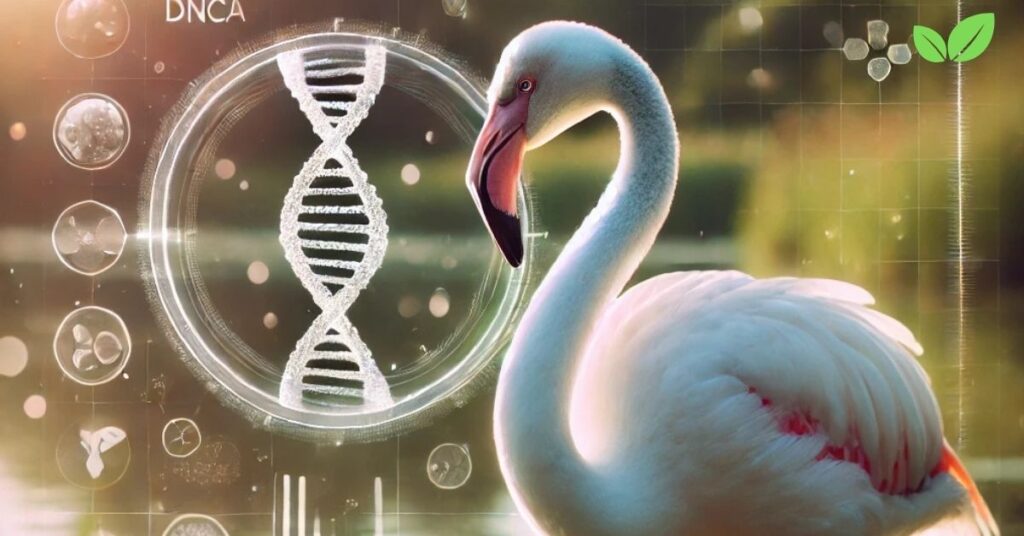
4.1. Genetic Mutations
In some cases, white flamingos are the result of genetic mutations. While rare, albino flamingos lack the melanin pigments found in typical flamingo species, leading to a completely white appearance. These albino individuals are not common and often face challenges in the wild due to their distinct appearance, which can make them more vulnerable to predators.
- Albinism: Albino flamingos have white feathers and pinkish eyes due to the absence of melanin. These birds may face difficulty blending into flocks, and their survival rates can be lower due to increased vulnerability to predation.
- Leucism: Leucistic flamingos, which are different from albino flamingos, lack some pigmentation in their feathers, leading to a patchy appearance that may include both white and pink feathers.
4.2. Health Conditions
Health problems such as liver disease or malnutrition can affect a flamingo’s ability to metabolize carotenoids, leading to a loss of pigmentation and the appearance of white feathers. Stress, illness, and poor diet can all play a role in whether or not a flamingo exhibits its typical coloration.
- Liver Dysfunction: The liver plays a crucial role in breaking down carotenoids and converting them into pigments. Liver dysfunction or damage can impair this process, causing a flamingo to lose its pink color and become white or pale.
- Nutritional Deficiencies: Flamingos that do not have access to a sufficient diet rich in carotenoids may slowly lose their pigmentation. This can occur in captivity when they are not fed the right foods, or in the wild when food sources are scarce.
5. Conservation Challenges for Flamingos and Their Ecosystems
Flamingos, both pink and white, face numerous conservation challenges as their natural habitats continue to shrink and degrade. From climate change to human-induced habitat loss, flamingo populations are increasingly at risk. The appearance of white flamingos in the wild can sometimes serve as an indicator of these broader environmental threats. Conservation efforts that aim to preserve the unique ecosystems in which flamingos thrive are essential to ensuring their survival and maintaining their role within the broader ecological balance.
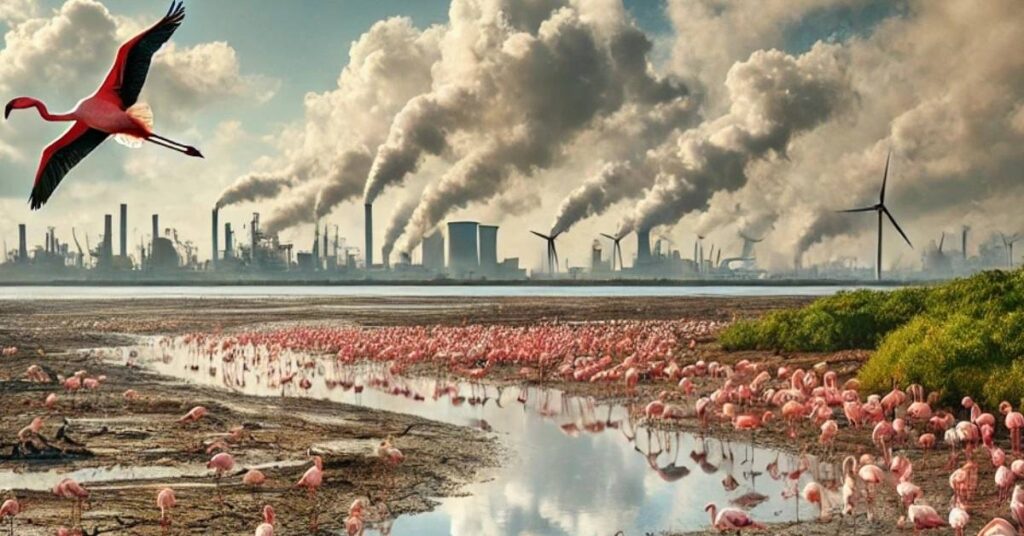
5.1. Threats to Flamingo Populations
There are several key threats to flamingos that have the potential to affect their populations globally. These threats are not limited to the availability of food that affects their pigmentation, but also include the overall degradation of their habitats.
5.1.1. Climate Change
Climate change poses one of the most significant threats to flamingos and their habitats. Flamingos often depend on shallow saline lakes and wetlands, which are highly sensitive to temperature changes, precipitation levels, and water availability. As global temperatures rise and weather patterns become more erratic, flamingo habitats are at risk of disappearing.
- Droughts and Water Shortages: Many flamingo habitats, particularly in Africa, the Middle East, and South America, are facing increased drought conditions, which shrink wetlands and limit access to food sources. This directly impacts flamingo populations, and may lead to the presence of more white flamingos as food sources become scarce.
- Rising Sea Levels: In coastal habitats, rising sea levels are threatening to inundate the shallow lagoons where flamingos feed. As these areas are submerged, flamingos lose access to the mudflats and marshes that serve as their feeding grounds.
5.1.2. Habitat Destruction and Urbanization
As human populations expand, the destruction of wetlands and saline lakes for agriculture, industry, and urban development has significantly reduced the habitats available for flamingos. Wetlands are often drained or polluted, leaving fewer areas where flamingos can feed, breed, and thrive.
- Agricultural Expansion: In many regions, wetlands are drained to make way for agricultural activities. This loss of habitat can directly impact flamingo populations, as their food sources are depleted and their breeding grounds disappear.
- Industrial Development: Flamingo habitats are also affected by industrial activities such as mining and salt production. These industries often alter the salinity levels of lakes and wetlands, making them less suitable for flamingos.
5.1.3. Pollution and Toxic Substances
Water pollution from agricultural runoff, industrial waste, and plastics is another major threat to flamingos. Polluted waters can reduce the availability of algae and small invertebrates that flamingos rely on for food. Additionally, exposure to toxic substances can affect flamingos’ health, reproduction, and ability to maintain their vibrant coloration.
- Algal Blooms: Excess nutrients from agricultural runoff can cause harmful algal blooms, which deplete oxygen levels in the water and create dead zones. These algal blooms can reduce food availability for flamingos and force them to seek out alternative food sources that may lack the necessary carotenoids, leading to the presence of white flamingos.
- Plastics and Microplastics: Plastic pollution is a growing concern for flamingos, particularly in coastal areas. Flamingos can ingest plastic debris, which can block their digestive systems and lead to malnutrition.
5.2. Conservation Efforts for Flamingo Protection
To address the challenges faced by flamingos and their habitats, numerous conservation efforts have been established. These initiatives focus on protecting key habitats, restoring degraded ecosystems, and promoting sustainable practices that reduce the negative impact of human activities on flamingos.
5.2.1. Habitat Preservation and Restoration
Preserving and restoring wetlands and saline lakes are critical components of flamingo conservation. Many flamingo habitats have been designated as protected areas, where human activities are limited to reduce the risk of habitat degradation.
- Protected Wetland Reserves: In regions such as East Africa and South America, conservation organizations have established protected wetland reserves that safeguard critical flamingo habitats. These reserves help ensure that flamingos have access to the food and breeding grounds they need to thrive.
- Habitat Restoration Projects: In areas where flamingo habitats have been degraded, restoration projects focus on improving water quality, reintroducing native plant species, and restoring the natural hydrology of wetlands. These efforts help rebuild the ecosystems that flamingos depend on.
5.2.2. Climate Change Mitigation
To mitigate the impacts of climate change on flamingo habitats, conservation efforts are also aimed at reducing greenhouse gas emissions and promoting sustainable water management practices.
- Carbon Offset Initiatives: Many conservation groups are advocating for policies that reduce carbon emissions, which contribute to global warming and the associated changes in flamingo habitats. By supporting renewable energy projects and reforestation efforts, these initiatives help slow the pace of climate change.
- Sustainable Water Management: In regions facing water shortages, conservationists work with local governments and communities to develop sustainable water management practices. This includes regulating water use in agriculture and industry to ensure that wetlands and saline lakes remain viable for flamingo populations.
5.2.3. Community Engagement and Education
Local communities play an important role in flamingo conservation efforts. By educating communities about the importance of wetlands and the role flamingos play in the ecosystem, conservationists can foster a sense of stewardship and encourage sustainable practices that benefit both people and wildlife.
- Eco-Tourism Initiatives: In some regions, eco-tourism initiatives have been established to promote flamingo conservation while providing economic benefits to local communities. These programs encourage visitors to explore flamingo habitats in a sustainable way, with part of the proceeds going toward habitat preservation.
- Environmental Education: Environmental education programs that target schools and communities near flamingo habitats help raise awareness about the challenges flamingos face and the importance of protecting their habitats. These programs empower individuals to take action in their communities to support conservation efforts.
6. Conclusion: Protecting White Flamingos and Their Ecosystems
The existence of white flamingos is both a biological curiosity and an environmental indicator. These birds, lacking the characteristic pink coloration, offer a unique insight into how flamingos’ diet, health, and environment directly influence their appearance and well-being. The occurrence of white flamingos can highlight broader environmental issues, such as reduced food availability, habitat destruction, and the effects of climate change.
Flamingos, both white and pink, play crucial roles in their ecosystems by maintaining the balance of algae and invertebrate populations through their specialized feeding behaviors. However, they face mounting challenges, including habitat loss due to urbanization, pollution, and the growing threat of climate change. Protecting these delicate ecosystems—wetlands, salt flats, and lagoons—where flamingos thrive is essential to preserving not just their populations but the biodiversity of these environments.
Conservation efforts must focus on safeguarding critical flamingo habitats, promoting sustainable practices, and raising awareness about the effects of environmental degradation. The presence of white flamingos serves as a reminder of the intricate connections between wildlife and their environments, urging us to take action to protect both. By doing so, we can ensure that flamingos, whether pink or white, continue to thrive in the wild for generations to come.
Read More: Albino Turkey: A Rare and Fascinating Phenomenon in Nature

